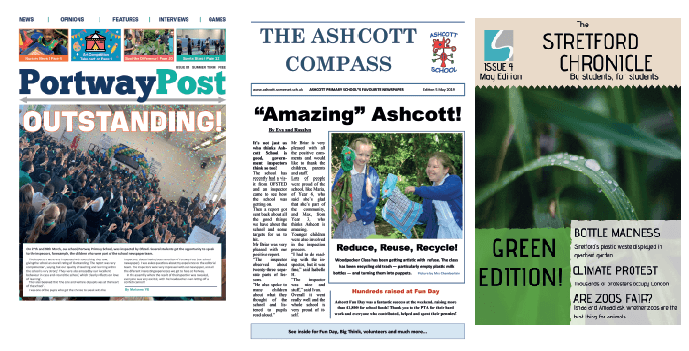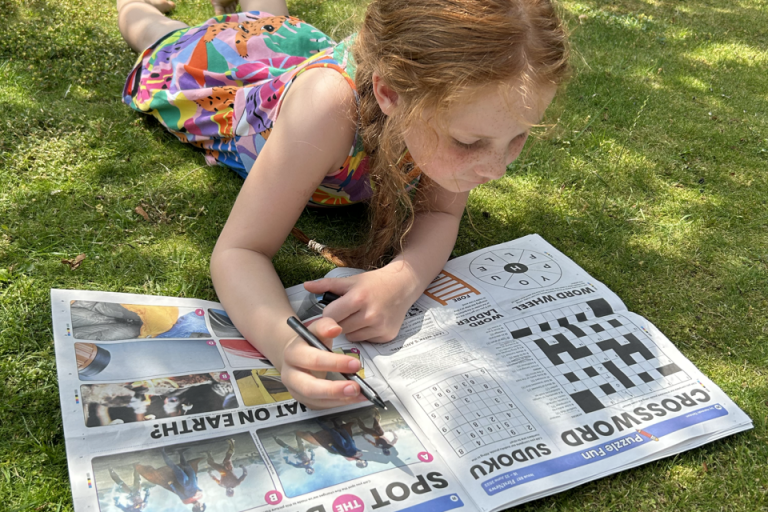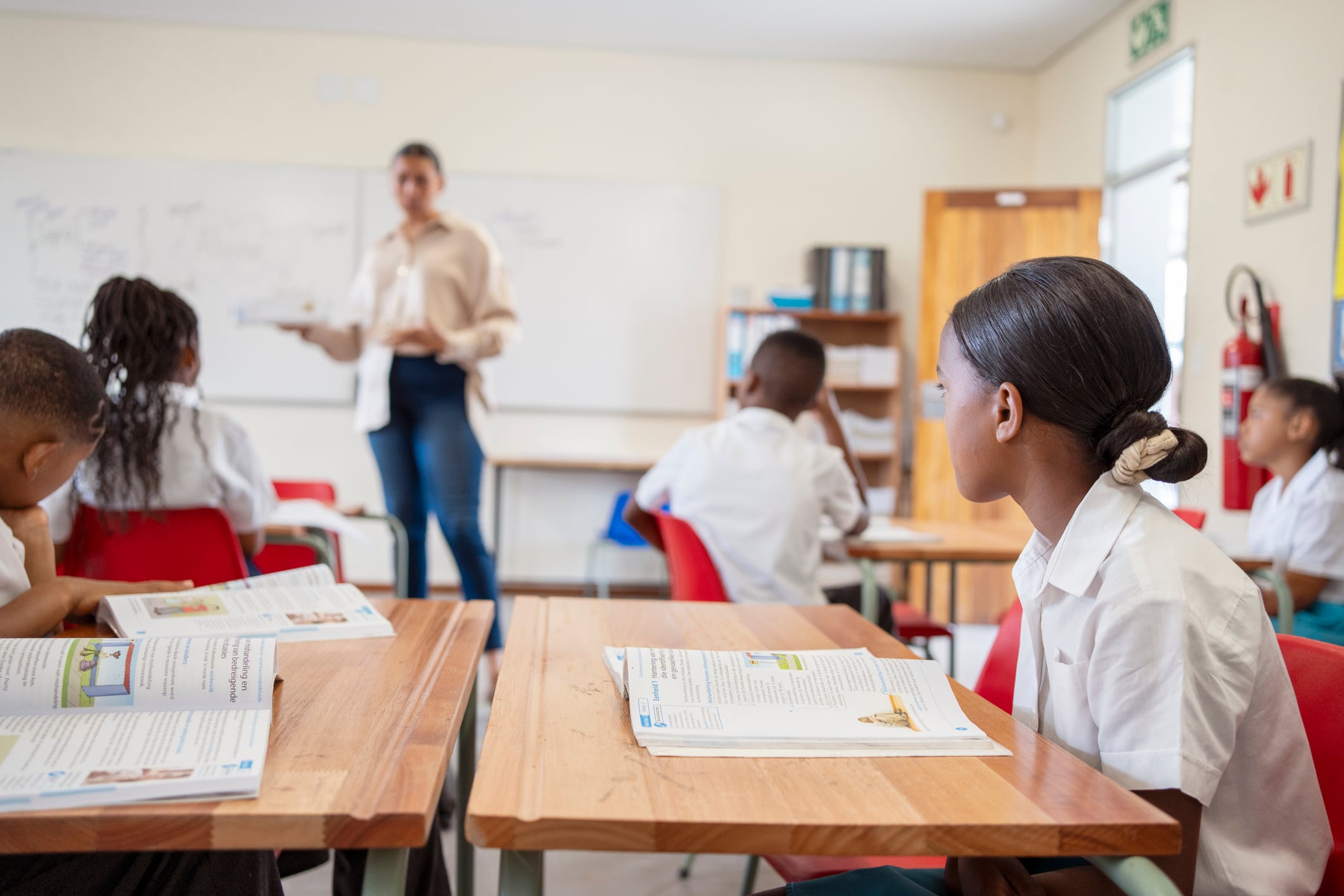How To Start a School Newspaper
Critical Literacy
There are numerous benefits to setting up a school newspaper. It’s not only an excellent way to teach critical literacy but gives children a reason to write with a purpose, to an audience, and the finished product is something they can be immensely proud of.
13th May 2020

So how do you go about starting a school newspaper? Setting up a school newspaper can be as simple or as complicated as you like. The below steps will help you get started.
1. Get a Team Together
Unless the newspaper is the responsibility of a particular class, it is likely that a lunchtime or afterschool Newspaper Club will need to be set up to create the paper. Although it’s possible for everyone to muck-in, children love having the honour of taking on a specific role and this mirrors the real-world newsroom.
2. Decide on the Format
Of course, there is a joy in getting a newspaper professionally printed, but there is no reason why your paper can’t consist of four articles made in Word and printed on two pages of A4. It will still be your school paper.
Another option is to forego printing entirely and publish online. If it’s possible to take over a blog page on your school website, the stress of printing – and having to produce all your material in one go – is completely removed.
If you do want to go ahead and print, download our full guide for quick tips to help with the practicalities that need to be thought through before you begin.
3. Agree on a Name
Choosing a name for the newspaper is great fun and should be done by the children, so that they have ownership. It’s interesting to touch on the history of newspapers and where our traditional newspaper names come from to help make an informed choice.
4. Determine What You Want to Report on
Many children imagine that their newspaper is going to attempt to be a national newspaper and cover all UK and international news stories. Although you may want to include big news stories that are of particular interest to your pupils, it works well to model your paper on a regional newspaper and cover news of interest to your local area.
So, school news will be the heart of a school newspaper and provide the bulk of your reports. There will be lots going on in school for your pupils to write about, for example, school clubs, sports teams’ successes, class trips, eco teams, music performances and school plays. Also, make sure your junior journalists attend your school council or pupil parliament meetings, so you can report on what they are working on.
Local news can be very interesting too – plans for a new park or a redevelopment of the local sport centre, for example. And occasionally, the children may want to include reports on wider issues that have hit the headlines, and which they feel strongly about.
5. Select What Sections You Will Have in the Paper
Newspapers are traditionally divided into themed sections. This might be a useful way to structure your own content. Sections can be colour-coded to make the newspaper attractive and to help the readers navigate. Why not use First News as a model and a starting point for developing your own ideas? You might also find this flatplan useful.
Choose Your Features
Features or special reports can cover a big school event or an interesting topic in depth. They usually sit outside the section structure, but not always – for example, an interview with the teacher directing the school play could be on the Entertainment page. Here are some ideas for special reports that we have found work well in school newspapers:
-
- Interviews with visitors to the school
- Residential trips
- School productions
- Unusual pets or hobbies
- Interviews with parents who have interesting jobs
- The school community’s world connections
7. Agree a Code of Ethics
Being a journalist is a responsible job. Your pupils will be creating a source of information that (you hope) others will trust and may well use to form opinions and make judgements. Older students may want to consider the relationship between a free press and democracy, and the reasons why the press is called the ‘fourth estate’.
Even younger students should discuss the right way and the wrong way of being a journalist and may want to agree a Code of Ethics. This is a set of guidelines that they promise to adhere to, to make sure they are fair and responsible journalists.
8. Fact Check
As part of their training to be journalists, it is essential that pupils are taught to question where the information they want to publish has come from and double-check their facts using different sources. Check out our other blogs on identifying what makes a reliable news source and tips for spotting fake news for more information.
9. Think About Photography and Copyright
Children have a tendency now to assume that they can use any image they find on the internet; in any way they want. As they begin to create news articles for publication, pupils need to understand that many images are under copyright and cannot be used without permission.
A safe place to find images is the Creative Commons: www. creativecommons.org. This is a huge resource of materials that are free to use because the owners or creators of the images have granted permission for their images to be reproduced. You may still need to credit the owner – check the details of the image’s Creative Commons licence.
10. Create a Style guide
Given free reign, children will spend hours choosing fonts and often end up with a different font for every element of text. Real world newspapers don’t do this because they have a style guide. A style guide is a set of rules controlling how content is written and designed.
Creating a style guide is a fun exercise for children interested in design. They will come to appreciate that professional results don’t come about by accident. For example, having a font size rule will make children realise that if text doesn’t fit in a space you don’t just make the font size smaller, you need to edit!
11. Design the Front Page
An engaging front page is what makes people pick up a paper to read so it’s crucial to put some time into how you want this to look. Check out our guide on What’s On The Front Page of Newspaper to help identify what needs to be included.
Download our full teachers guide including more tips, school newspaper examples and case studies and our Junior Journalist Guide here.
Interested in First News?
First News reaches millions of young readers every week, at home and at school. Our age-appropriate news stories and activities spark curiosity, build media and information literacy skills and empower children with the tools to navigate the world.



